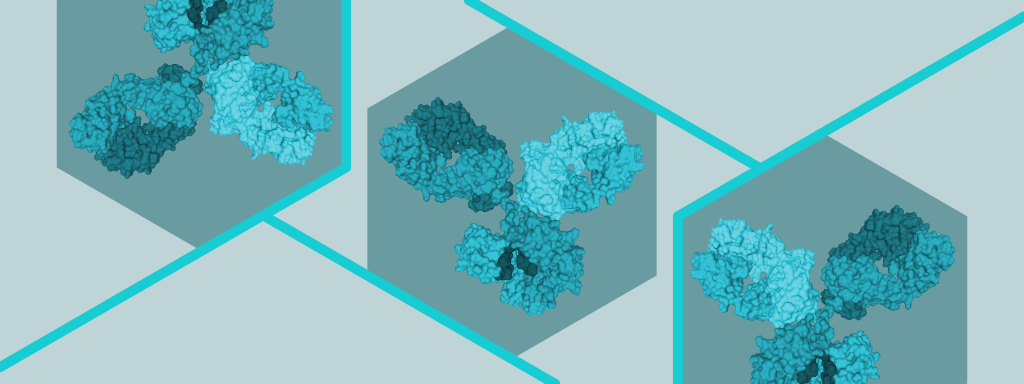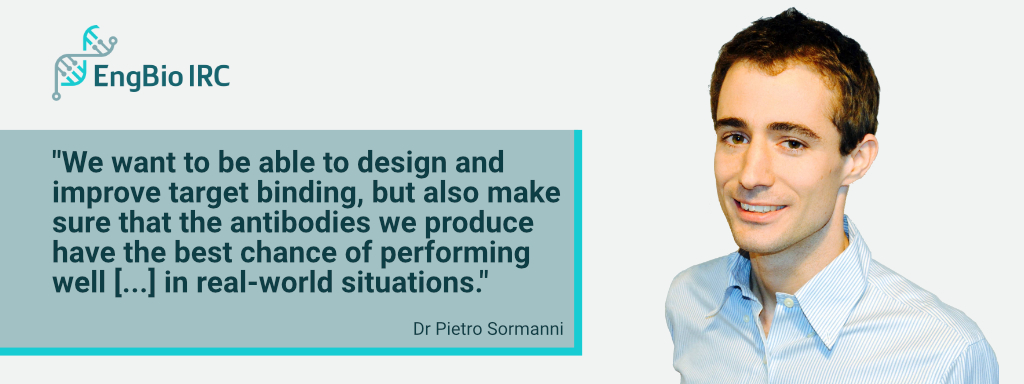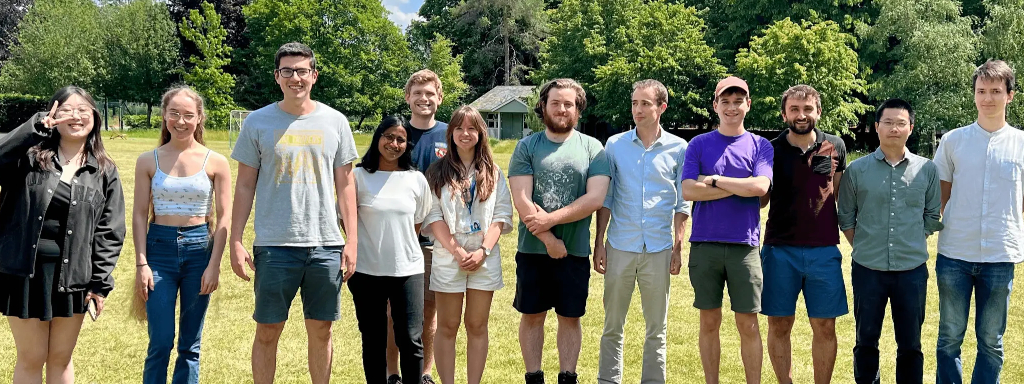
Submitted by S.A. Norwood on Tue, 08/04/2025 - 14:14
AI is helping design the next generation of therapeutics. Hear from Royal Society University Research Fellow Dr. Pietro Sormanni about how his lab is using AI and machine learning techniques to improve antibody design for medicine and diagnostics.
Q: Your academic background started in theoretical physics. How did you find your way into biology and medicine?
I started out as a physicist studying cosmology and quantum field theory. During my master’s degree I was looking at protein folding from a theoretical physics perspective, and that is what got me excited about applying my skill set to biological problems. I then moved on to a PhD in chemistry and a postdoc in biomedical research. That led to me being awarded a Royal Society University Research Fellowship, which now supports my lab's work at the interface of biochemistry, biophysics and computing.
Q: What’s the main focus of your research group today?
We are working on how to design new antibodies. Antibodies are becoming widely used as therapeutics, and also have applications in other areas, such as biomedical research and diagnostics. We use computational approaches to design antibodies that can bind to new targets, and wet lab techniques to validate predictions and generate data to inform computational method development. We also want to make sure that these new antibodies have good ‘developability’. This encompasses a wide range of properties, such as stability, manufacturability, solubility and immunogenicity. We want to be able to design and improve target binding, but also make sure that the antibodies we produce have the best chance of performing well as therapeutics, or useful diagnostic reagents, in real-world situations.
Q: How does AI fit into this picture?
We use various computational approaches for antibody design, including machine learning algorithms and generative AI. We want these programmes to learn about protein-protein interactions and specifically about antibody-epitope recognition - how do antibodies bind to their targets, and what makes their interactions so specific? You can present them with a lot of example data of known antibodies and get them to design new ones. We have had particular success with a self-supervised learning model, which can score how similar new designs are to real human antibodies, and even generate designs which are indistinguishable from natural antibodies. This is very useful, as natural antibodies have an excellent balance of complex in vivo properties and are inherently compatible with the human immune system, meaning designs have better chances of succeeding in clinical applications.
AI approaches allow us to look at complex problems [...], which it wouldn’t be possible to explore otherwise.”Dr Pietro Sormanni
Q: You use a variety of computational approaches in your work, what makes AI particularly useful?
In general, AI is more accurate and faster than other approaches. It can take a while to train a new AI system, but once it is trained, getting results is very fast and the predictions are usually more reliable than those from physicochemical calculations. It also offers massive advantages in computing complex information. For example, an antibody contains around 1500 amino acids, 15-30 of which are the target-binding region, and there are 20 different amino acids that could be at each position. This is a huge number of different combinations - a huge space to explore. Computing all of the different combinations explicitly would be extremely time and power intensive. AI approaches allow us to look at complex problems like this, which it wouldn’t be possible to explore otherwise.
However, there are also limitations. AI approaches are more of a ‘black box’. They can make something very practically useful, but that doesn't necessarily mean we understand the problem any better. Or that we gain any insights in the physics that underpins the problem.
Q: Your work is very interdisciplinary. What are the benefits and challenges of that?
I think that any highly relevant scientific question in modern science, more or less, lives at the interface of at least two, and often multiple, disciplines. Antibody design is no exception. When you work in an interdisciplinary way you can do something that just wouldn’t be possible with only one component. For example, a computer scientist could have a lot of fun designing models, but if you cannot test anything in the laboratory, you cannot establish crucial feedback. On the other hand, if you were only to work experimentally it would be very labour intensive, and there would be some things that you just couldn’t do practically.
I think that any highly relevant scientific question in modern science, more or less, lives at the interface of at least two, and often multiple, disciplines. Antibody design is no exception.”Dr Pietro Sormanni
Q: So what’s next for the intersection of AI and engineering biology?
In our lab, we are continuing to develop new technologies to make antibodies for therapeutics and diagnostics applications. We are also developing tools that other researchers can use. Recent examples include our AbNatiV platform1 which predicts the ‘nativeness’ of a designed antibody (how similar it is to a natural human antibody) and uses this information to help redesign a more usable antibody. Or NanoMelt,2 a programme to predict and design more stable antibodies.
In general, biomolecular design, like the work that we are doing, is an obvious area where AI has already made an impact. The 2024 Nobel Prize in Chemistry was awarded for AlphaFold2, an AI-driven programme for predicting protein folding, and to David Baker for computational protein design. In biomedicine, AI is proving very useful to make sense of the large amounts of ‘omics data that can now be obtained. I think we will soon start to be able to match complex genotypes and ‘omics information to phenotypes - understanding how underlying biological codes are translated into observable traits. In some areas, AI and engineering biology may also help to overcome barriers to precision medicine, allowing us to tailor treatments to specific patients.
Members of the Sormanni Lab
Learn More
Dr Pietro Sormanni is a Royal Society University Research Fellow in the Yusuf Hamied Department of Chemistry, and a member of the Cambridge Engineering Biology IRC.
Learn more about the Sormanni Lab’s work on their website |
Learn more about how Cambridge Researchers are Shaping AI for Everyone, including how AI can transform health and medicine. |



